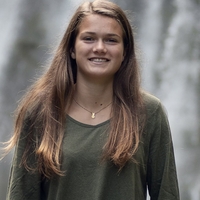Manipulating drug resistance in melanoma through pre-treatment with signaling molecule
I have been working with Dylan Schaff in Dr. Sydney Shaffer’s lab studying drug resistance in melanoma. Melanoma is treated with therapies that are able to destroy nearly all of the tumor. However, in some cases, a rare subset of cells are able to survive the treatment. Eventually, these cells are able to form a fully resistant tumor and lead to relapse of the disease for the patient. Our lab investigates the phenomenon of resistance to various treatments in melanoma. Specifically, we focus on resistance to both naturally occurring stresses, such as the low-oxygen core of a tumor, and anti-melanoma therapies that are used clinically. Our panel of stressors includes CoCl2, which mimics the stressful low-oxygen environment, cisplatin, a chemotherapeutic, or dabrafenib and trametinib combination treatment, which are targeted therapies against melanoma. Our lab uses single cell transcriptomic analysis tools to dissect the transcriptional differences in cells that are resistant compared to those that are sensitive to various treatments
Melanoma cells respond differently to stressors based on the composition of their direct surroundings, known as the tumor microenvironment. My project has been studying how signaling proteins present in the melanoma tumor microenvironment affect resistance to drug therapy. I have identified and begun investigating signaling pathways related to stress resistance that are modulated by these signaling proteins. By identifying these resistance-related pathways, and the ways that they are modulated via the tumor microenvironment, we can work to develop more targeted treatments that inhibit these pathways and improve the prognosis of melanoma patients.
My project investigated the effects of five signaling proteins: transforming growth factor ß (TGFß), brain-derived neurotrophic factor (BDNF), neuregulin 1 (NRG1), hepatocyte growth factor (HGF), and interleukin 6 (IL6). Melanoma cells were plated and treated with one of these proteins, then they were switched into one of our stress conditions. The cells were then imaged in order to qualitatively determine the effect of the protein on resistance in each condition. I am currently working on quantitatively analyzing the images by counting cells and colonies using computational programs.
In addition, I performed RNA fluorescent in situ hybridization, a technique which allows for the quantification of RNA from particular genes, on cells treated with each protein from the panel to identify expression of RNA molecules. I probed the cells for markers of resistance to various treatment conditions that are present prior to treatment. I am currently analyzing this data to identify possible pathways of resistance mediated by the signaling proteins.
To further this project, I will be investigating potential markers of resistance to cisplatin that may be activated by the proteins which increase resistance to cisplatin. These markers, which may be different from those that are markers of resistance to targeted therapy treatment, will help elucidate the mechanisms of resistance to our variety of drug treatments

Comments